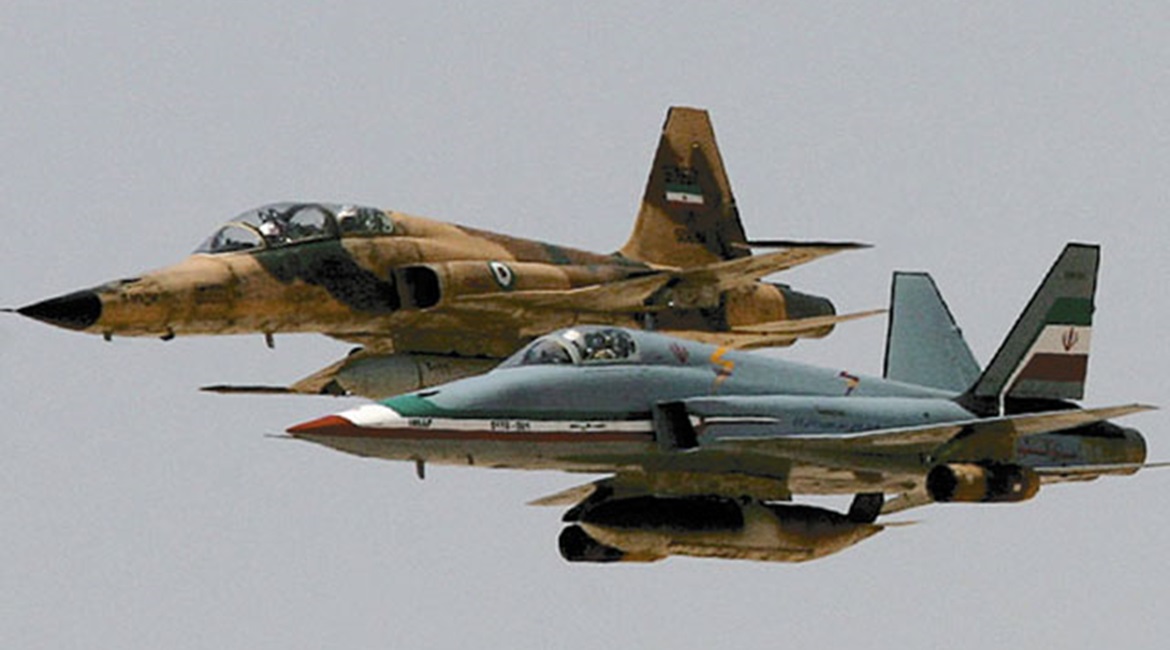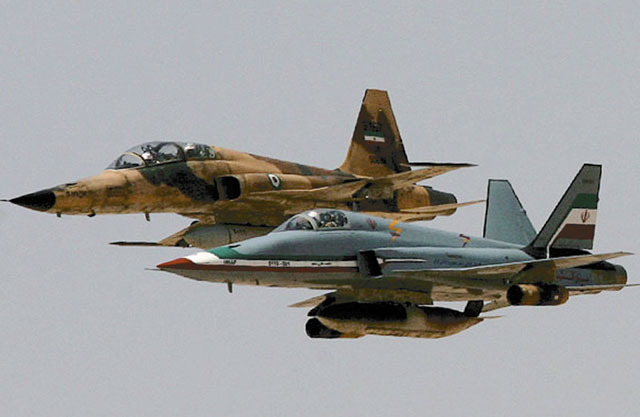
The Islamic Republic of Iran Air Force (IRIAF) fields an inventory of outdated and increasingly unserviceable aircraft types that were mostly either received from the United States ahead of the country's revolution in 1979 or seized from Iraq following the Gulf War in 1991.

The twin-tailed Saeghe (foreground) in formation with an F-5F during military exercises. Iran fields a fighter force that is made up of either ageing types received from abroad, or domestically-developed types of questionable capabilities. it is doubtful that the IRIAF would be able to mount any long-term opposition to any concerted US air campaign. (Iranian MoD)
Prior to the revolution in 1979, the US supplied the Shah of Iran with about 500 of its latest-generation combat aircraft (79 Grumman F-14A Tomcats; 177 McDonnell Douglas F-4E, 32 F-4D and 16 RF-4E Phantom IIs; and 141 F-5E and 28 F-5F Tiger IIs). Combined with the many Lockheed Martin C-130E/H Hercules and Boeing 707 transport aircraft, Lockheed Martin P-3F Orion maritime patrol aircraft, and Boeing CH-47A Chinook, Bell UH-1 Iroquois, and Bell AH-1 Cobra helicopters also received, these made the then Imperial Iranian Air Force one of the most capable in the region, if not the world.
US sustainment and support of these platforms ceased with the fall of the Shah, however, leaving Iran to maintain them on its own. Although these US-supplied aircraft were later augmented with Chinese and interned Iraqi fighters (including French and Russian types), international sanctions meant Iran still faced an uphill struggle to keep them serviceable and fit for purpose.
Along with war losses and attrition, the cannibalisation of aircraft has helped reduce the IRIAF to a shadow of the force it was in 1979. According to Janes World Air Forces
Looking to read the full article?
Gain unlimited access to Janes news and more...




